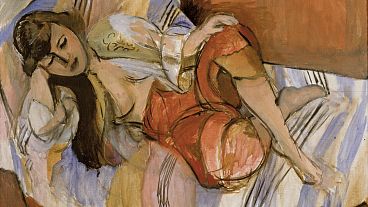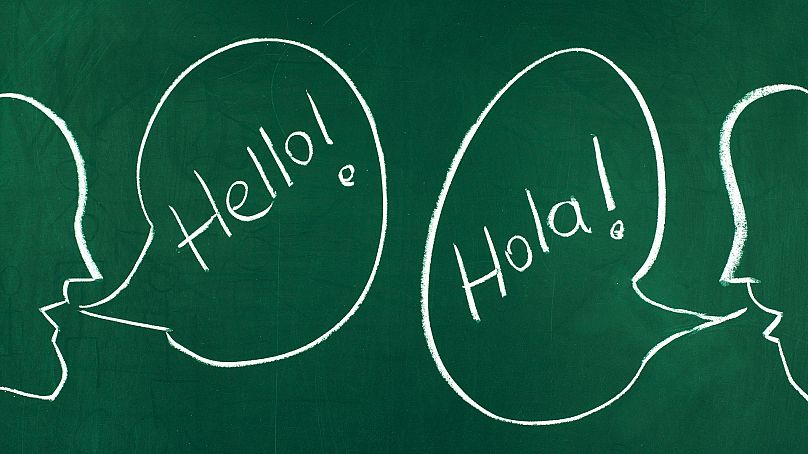As hybrid languages proliferate around the world, Euronews Culture has been talking in tongues around some of the most popular combinations in Europe.
A recent study of the US Latinx community found that 75% could speak Spanish well, leaving a whole quarter of American Latinos unable. Of this group that can’t use Spanish fluently, more than half said they had been shamed by their community for their lack of linguistic ability.
Yet amid statistics of falling Spanish fluency in the US, a new dialect is developing. Spanglish “is the fastest-growing hybrid language in the world,” Ilan Stavans, professor of Latinx and Latin American studies at Massachusetts’s Amherst College told El Pais.
Spanglish is a hybrid spoken language that combines both Spanish and English. In the US, over half (63%) of the 62 million Latinx population communicate with this mix of the two popular languages.
In different areas of the US, different Spanglish dialects have developed, with “Nuyorican” describing the Puerto Rican Spanish/African American English mix spoken by New York Puerto Ricans and “Cubonics” used by Cubans in Miami.
Hybrid languages are a commonly occurring part of cultural integration. While in the US, it might be remarkable to discuss how the Latinx community has created these mini-dialects of Spanish and English, languages melding together is by-the-by for the average European.
Whether you’re stalking the corridors of power in Brussels or ordering a beer at a späti in Berlin, you’ll likely overhear at least a multitude of language with the odd loan word from English thrown in.
The official name for this is “macaronic language”. Some of the earliest examples of macaronic language are found when Latin merged with local vernacular languages in Europe. While Latin was still the go-to language for religion and academia in the 12th century, vernacular language was becoming increasingly popular for poetry and storytelling, and writers would start to combine the two in their works.
“Macaronic” itself comes a combination of Neo-Latin and Italian, from the peasant pasta that inspired the 15th century Padua poet Tifi Odasi’s work ‘Macaronea’ which used macarnoic language.
Today, some of the most common macaronic languages in Europe are combinations of local languages and English, owing to the cultural prevalence of the lingua franca (sorry France). Here are some of the major macaronic languages you might hear in Europe.
Franglais
Otherwise known as Frenglish, this is a mix of… you guessed it, French and English. Despite the work of the Académie française to police the French language, the average person has adopted many Englishisms into their everyday parlance.
One example would be the word “email” which the Académie française wanted French people to call a “courriel”. However, the popularity of the original technological term has often prevailed in quotidian chatter.
Denglisch
Combing German (Deutsch) with English (Englisch), Denglisch has been criticised greatly by German culture for its watering down of the great German language, with some people referring to it as McDeutsch or Dummdeutsch (Dumb German).
Once again, it’s often new technology that wins out in bringing English influence to another corner of the world. If you’re a teen, waiting for a new song to arrive on your phone, you might be waiting for it to have “gedownloadet”. Or even in a work situation, you may be chatting fluently in German to your colleagues before you both go into take a “Meeting”.
Yinglish
While we could go on for columns about the different ways each European nation interacts with English, for our final example, let’s look at a language that isn’t directly tied to any one nation. Yiddish is a language that was historically spoken by Ashkenazi Jews throughout Europe. Though its use diminished after the Second World War, many Yiddish words have entered the English lexicon through their use by Jewish comedians and writers.
Yinglish is a rare macaronic language in that it is mainly used by people who don’t actually speak Yiddish. You don’t have to be fluent to know what a schmuck (fool) is. Nor do you have to have Jewish heritage to tell a good shpiel (story).
Some of the words, like schvitz (sweat), have even taken on English grammar rules in their use. If you were to go to a sauna, you might be “schvitzing”, a word that is neither Yiddish nor English.

















